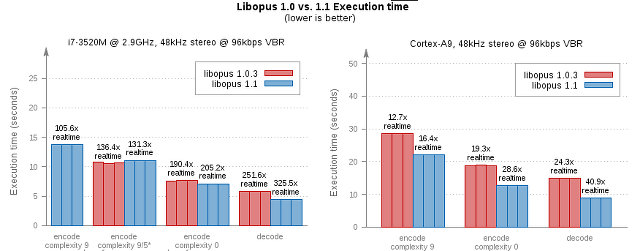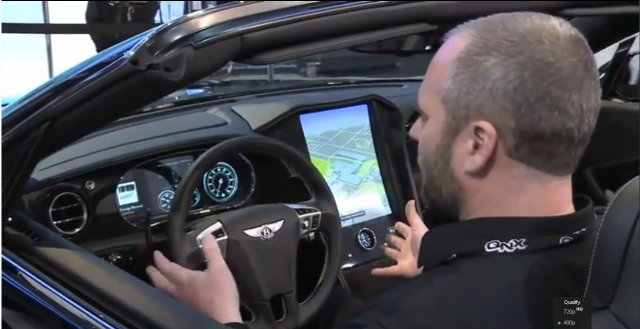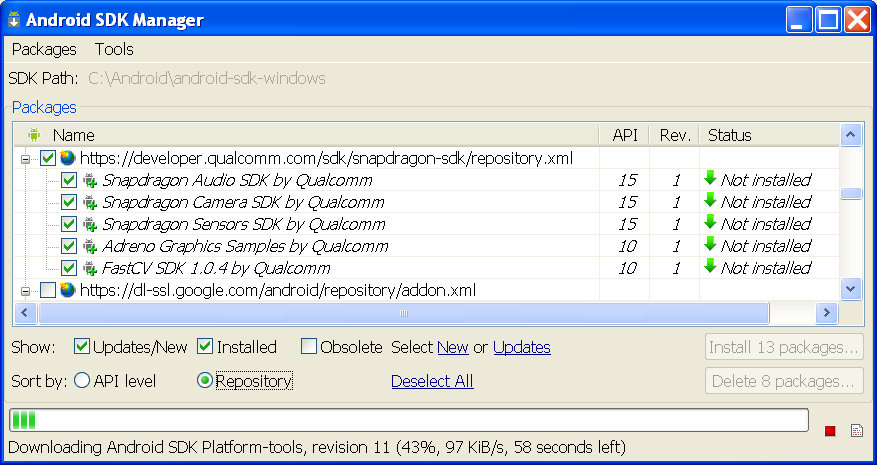I’ve just stumbled upon Opus, a relatively new audio codec, with the release of version 1.1 implementation which improves encoding quality for VBR audio, automatically detect audio or speech to select the best encoding mode, and improved 5.1 surround quality/compression ratio. The new release also bring speed improvements for all architectures, and specifically for ARM, where decoding uses around 40% less CPU and encoding uses around 30% less CPU thanks to the use of NEON compared to an earlier version. You can go to the online demo page to find more about the latest released, and try some of the latest improvements. This all looks fun, but I wanted to know more about Opus, and especially how it compares against MP3 or AAC. It turns out Opus was not originally designed to compete against MP3/AAC which are used to store audio, but instead it was meant to be used for […]
Google Announces LG Nexus 5 Smartphone with Android 4.4 KitKat
Google has partnered with LG and Nestle to bring to market the latest Nexus 5 smartphone featuring Android 4.4 “Kitkat”, the latest, and brand new, release of Android. Let’s first have a look at the device, and then we’ll go through the new features and improvement brought by Android 4.4. LG Nexus 5 Nexus 5 has the following technical specifications: SoC – Qualcomm Snapdragon 800 @ 2.26GHz with Adreno 330 GPU @ 450MHz System Memory – 2GB RAM Storage – 16 to 32 GB flash, but no microSD slot Display – 4.95″ touchscreen display with 1920×1080 resolution, Gorilla Glass 3 Connectivity – Dual band 802.11a/b/g/n/ac WiFi (2.4G/5G), Bluetooth 4.0, NFC, and GPS Celullar Networks – 2G/3G/4G LTE. GSM, CDMA, WCDMA, and LTE in North America, and GSM, WCDMA, and LTE for the rest of the world. Camera – 8MP rear camera with Optical Image Stabilization (OIS) and 1.3MP front camera […]
DroneShield – Raspberry Pi Powered Drone Detector
In case you are wary of having drones, such as RC helicopters, quadrotors…, flying around your house and invading your privacy, DroneShield can help you detect consumers’ drones by using a Raspberry Pi, a microphone and FFTW library, a C library for computing the discrete Fourier transform. The device will capture the audio with the microphone, analyze the noise spectrum of the drone flying around, and search for an entry in a signature database, and if a match is found the device will then send an email or SMS to inform you of the “invader”. There are complex challenges to overcome, or limitations, with this method, as any background noise will affect the detection, and drone emitting little noise or flying at high altitude won’t be detected. Spectrum analyses should however help avoid false positives such as a loanmowers and leafblowers as those emit a different kind of noise.They also […]
QNX CAR 2.0 Demo and Texas Instruments OMAP5 Jacinto 6 Processor
There’s a Bentley GT concept car at CES 2012 to demonstrate QNX CAR 2.0 platform that provides dual screen support with the dashboard and an infotainment display for the automotive industry. Under the hood, the platform features TI DLP technology, and TI OMAP5 and Jacinto processors running QNX Neutrino RTOS. Texas Instruments and QNX uploaded a video demo of the concept on YouTube. They explain that they switched their platform from HTML5 to native OpenGL for optimal performance using Storyboard Suite from Crank software, and they can now show 3D maps smoothly on the platform. The 1080p user display is curved to be more user friendly (better touch angles). You must have certainly heard about touchscreens before, but maybe never heard about “pretouch”. Pretouch is a feature of the system that detect when you hand comes close to a control virtual and pops up a virtual menu. The dashboard shows […]
AnDevCon IV Classes and Workshops Schedule
AnDevCon is a technical conference for software developers building Android apps, and the fourth Android developer conference will take place in San Francisco on December 4-7, 2012. The organizers have already listed the schedule, including details about the workshops and classes which will take place at the conference. The 4th of December is reserved for workshops, and the other 3 days can be spent on shorter classes. All workshops will provide sample code, as well as most classes, excluding the overview session and business related sessions. There will be three full day Android workshops: Android Development Boot Camp – Hands-on introduction to Android application development and the tools essential to the process. Beyond an introduction to the basics, this workshop also covers some of the common hurdles met with development, and how to overcome them. You will also have the opportunity to build an Android app of your own where […]
ARM TechCon 2012: Software & System Design Schedule
ARM Technology Conference (TechCon) 2012 will take place on October 30 – November 1, 2011, in Santa Clara, and UBM Electronics has already posted the detailed schedule for the event. The first day (October 30) will be Chip Designs day and the other 2 days will focus on Software & System Design. Even if, like me, you are not be able to go there, it’s still interesting to know what will be discussed at the conference, to have a better idea where ARM is going, and what new technologies and/or development techniques are (or will become) available. There will be around 70 sessions categorized in 15 tracks: Android / Open Source – Development tools, middleware for native application development, and optimized drivers for Android, Linux, FreeRTOS etc … Compute Platforms – Development and implementation of standards and specifications, from board/module design to consumer and server designs Developing / Debugging – […]
Linaro 12.06 Release with Kernel 3.5 and Android 4.0.4
Linaro has released version 12.06 based on Linux Kernel 3.5-rc3 and Android 4.0.4 (r2.1). This release brings further multimedia enablement for Android as well as some improvement to perf for Android, improved instructions & scripts for multi-arch on Ubuntu, and lots of little improvements and bugs fixes. Here are the highlights of the release: Android Multimedia enablement on AOSP, patches are in review. Most of the benchmarking applications have been automated via Monkeyrunner, working on PandaBoard and Snowball. Update panda-ics-gcc47-tilt-tracking-blob build to the TI LT 3.4 kernel. USB camera preview and still capture forward ported to tilt-tracking. 3D graphics and multimedia working on tilt-stable. IOMMU for Origen’s Multi format codec (MFC) enabled. IOMMU for Origen’s FIMC enabled. (FIMC stands for Fully Interactive Mobile Camera, and it’s used for camera input). Snowball upgraded to Android 4.0.4. Cortex strings landed in Linaro Android and submitted to AOSP (https://android-review.googlesource.com/#/c/38031/). This is part of […]
Qualcomm Announces Snapdragon SDK 1.0 for Android
Qualcomm has announced the Snapdragon SDK for Android at the Uplinq 2012 developers conference, and a preview release of the SDK is now available on Qualcomm’s developer site. The full SDK will be available to device manufacturers and developers in the coming months. The Snapdragon SDK for Android enables developers to features of Snapdragon processors via Application Programming Interfaces (APIs) not otherwise available in the stock Android SDK including: Snapdragon Audio SDK (new) Snapdragon Camera SDK (new) Snapdragon Sensors SDK (new) Adreno GPU sample code for OpenGL ES FastCV SDK – Mobile-optimized Computer Vision (CV) library Supposedly, there is also IZat Location SDK, but it did not show up in the list when I tried it. At first, the SDK will only support devices build around Snapdragon S4 8960 processor, but the company expects to support future Snapdragon processors over time. The Snapdragon SDK for Android allows developers to take […]









